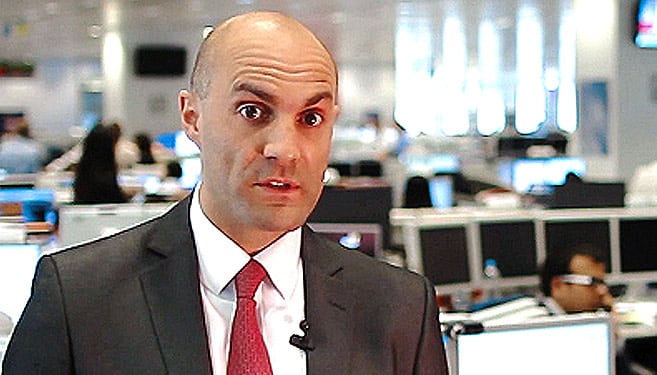 THE SINGLE TRACK.
THE SINGLE TRACK.
There may be a lot of talk about multi asset class trading but Lynn Strongin Dodds finds the industry still trades in silos.
Buyside firms may have reconfigured their trading desks to offer a more centralised structure but seamless trading across different asset classes on one platform is still in the future. This is not necessarily down to the technology but the operational processes and inherent differences between the equity, fixed income and currency worlds.
These discrepancies were succinctly highlighted in a Tabb Report – MiFID II and Fixed Income Price Transparency in 2012 – which still rings true today. Simply put, equity is one asset class whether it is a small UK mid-cap, large European corporate or one block trade. By contrast, fixed income is not homogenous and comprises multiple investments that not only have different structures and trading methodologies but also issue and maturity dates, coupon rates, call and put features. Bonds are also segmented by issuer, such as government, sub-sovereign and corporate bonds and can either fall into the inflation protected, discount, coupon and zero-coupon camps.
 “The execution across asset classes is not homogenous,” says Serge Marston (left), managing director, head of eCommerce sales at Deutsche Bank. “There is no central order book for fixed income which is why trading high yield bonds can be more of an art than a science. There is no solution in the e-commerce piece for illiquid credit. As a result people on the desk look at the relationships between different asset classes and the impact they have on funds from a cost perspective but the execution and order management systems are different. However, we are beginning to see combinations in for example, FX and rates, rates and credits.”
“The execution across asset classes is not homogenous,” says Serge Marston (left), managing director, head of eCommerce sales at Deutsche Bank. “There is no central order book for fixed income which is why trading high yield bonds can be more of an art than a science. There is no solution in the e-commerce piece for illiquid credit. As a result people on the desk look at the relationships between different asset classes and the impact they have on funds from a cost perspective but the execution and order management systems are different. However, we are beginning to see combinations in for example, FX and rates, rates and credits.”
Another reason multi asset class trading has not taken off is down to structural issues at brokerage firms. It is not easy to trade a multitude of assets down one pipe because of conflicts of interest, and in the opinion of some multi asset trading will only gain momentum when the vendors can overcome the historic bias of specialising in one asset and deliver the right products.
Vincent Mooijer, senior equity trader at PGGM, the largest Dutch pension fund with €142.8bn assets under management Dutch pension, notes, “Through the years markets have developed in different directions for a number of reasons. On both sellside and buyside this required a different expertise and therefore trading desk were organised per asset class separately. Several parallel universes were created to cater for the execution and processing of trades
He notes though that a combination of technological progress, a regulatory demand for greater transparency and a growing cost concern will pave the way for a more multi-asset approach. “Cost efficiency by combining technology and people is however not as easy as it sounds. Multi asset class trading does not necessarily mean one trader should trade every product via the same trading platform. This may be a solution for some but there will also be a demand for experts in one area or another. For example, in a multi asset class environment the fixed income trader could sit next to the equity trader and it will create a broader view of the market and you can make a better use of your resources.
However, change will not happen until technology and markets become more alike and traders learn to speak each other’s language. The advantage of technology though is that it makes execution of trades scalable, efficient and with the proper measures it reduces operational risk.”
Frederic Ponzo, managing partner at consultancy GreySpark Partners, agrees adding, “multi-asset class trading may be driven by the consolidation in the buyside trading desks but essentially it hasn’t changed much over the past two years in terms of what individuals are actually doing. You may see some traders execute listed derivatives as well as the underlying cash equities, but you will not see one person trading bonds one minute, then commodities or equities the next.”

Stu Taylor (below), co-founder of Algomi, a company that sells fixed-income market data software, notes that the trend is more with multi asset class investing. “The portfolio management and order management systems may be used for cross assets but a large proportion of trading is still done on a siloed basis. There are still corresponding systems and individual specialists sitting on the desk at the dealer level due to the nature of the specific assets. This is not just with the buyside but also the sellside. Some banks are trying to present themselves as one stop shops with a semblance of uniformity but behind the scenes, they are using different market infrastructures to trade.”
There has been more progress on offering the buyside a bigger picture of the trading landscape. “There is a growing need for asset managers to take a holistic view and look at, for example, multiple trades across different asset classes at the aggregate level,” says Des Gallacher, vice president, product management, for Charles River. “The head of trading has more responsibility than in the past when there may have been separate heads of equity and fixed income while at a corporate level there is a need to more effectively manage commission budgets and trade performance analysis. A single order management platform facilitates this in a holistic manner. In general, execution venues continue be specific to asset type.

David Masullo (above), head of EMEA Sales at Bloomberg Tradebook, echoes these sentiments. “Clients want us to bridge the gaps not just between asset classes but also geographies. This is because fund managers are taking greater control over pre and post trade analysis. They are also getting better at segmenting the different brokers, As a result they are looking for a platform that offers an overlay or much wider picture of the market on their desktop.”
Masullo also notes that there has been development on the cross algo front especially in the futures arena. Instead of leveraging a successful product from the equities space and for example, apply it to the futures market, there are products that can help buyside traders hedge a cash position with an FX future or trade a future against a government bond.
One of the drivers according to a new report by Tabb Group and Fidessa, is that futures markets are becoming increasingly automated, with an ever-rising proportion of algorithmic execution and sophisticated multi-asset class strategies. It found that the buyside are employing futures algos to not only hedge positions but also to generate alpha.
Looking ahead, products are being developed that will enable fund managers to make decisions from conditional factors including structured and unstructured data, as well as correlated and uncorrelated trends. Pairs trading algos are also expected to gain traction while portfolio optimisation algos could also become more prominent, as well as matching trading strategies and product types based on the underlying investment strategy.
TABB Group predicts that the proportion of buyside futures orders specifically identified as algorithmic could reach 20% by the end of 2014 and 30% by 2015. Usage has already increased to 12% last year from 4% in 2012. The figures only count orders where the buyside firm specified to the broker that an algorithm should be used – not the total amount of algorithmic activity that actually took place on the market.
©BestExecution 2014

 THE SINGLE TRACK.
THE SINGLE TRACK.


